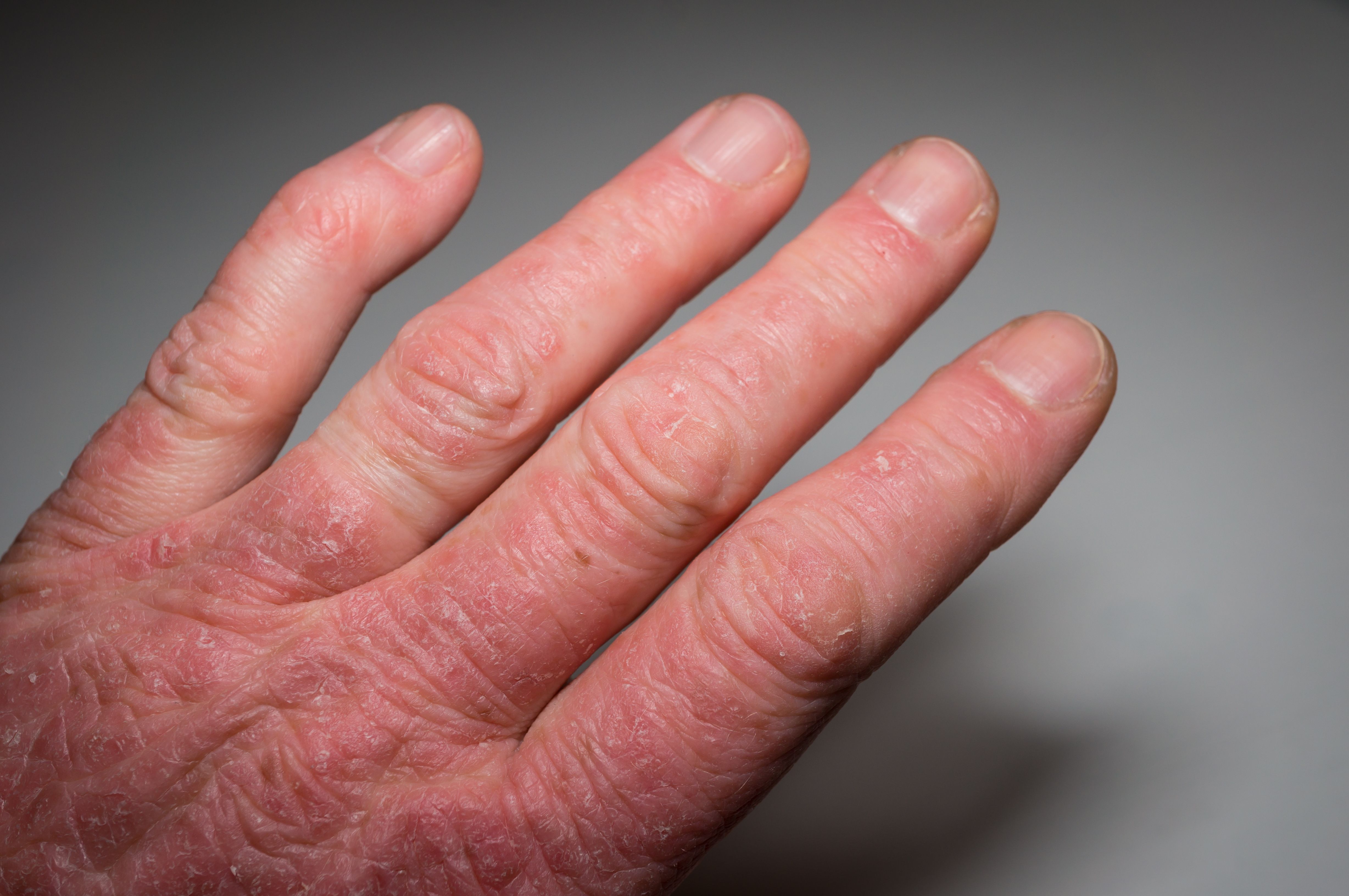- Center on Health Equity & Access
- Clinical
- Health Care Cost
- Health Care Delivery
- Insurance
- Policy
- Technology
- Value-Based Care
Ultrasound and MRI of Achilles Tendon Can Improve Early Detection of Psoriatic Arthritis
A study from UCSD highlights how advances in imaging modalities and utilization could aid in the early detection of psoriatic arthritis.
This article was originally published by HCPLive.
New data from a National Institutes of Health–funded study are underlining the potential of ultrashort echo time (UTE) magnetic resonance imaging (MRI) techniques for quantitative evaluation of entheses and tendons in patients with psoriatic arthritis (PsA).
Led by investigators from the University of California, San Diego (UCSD), results of the study indicate using MRI T1 and magnetization transfer (MT) modeling could aid in early detection and management of PsA, with use of UTE-MT modeling able to detect increased entheses among those with PsA.1
psoriatic arthritis | Image credit: Iri-s - stock.adobe.com

“The current study was the first to examine UTE-MT modeling for in vivo enthesis evaluation, and we have also demonstrated its potential for distinguishing between patients with PsA and asymptomatic volunteers,” investigators wrote.1
With advances in imaging driving a growing interest in use of imaging modalities to improve early detection of PsA,2 the current study was led by Dina Moazamian, MD, and a team of investigators to better understand the potential for UTE-MRI in the evaluation of the Achilles tendon and enthesis. With this in mind, the investigators designed their study to evaluate potential differences in macromolecular proton fraction (MMF) of the Achilles tendon between patients with and without PsA as the primary outcome of interest.1
To assess MMF, investigators performed scans of the sagittal plane with UTE-T1 and UTE-MT modeling sequences on a 3-T clinical scanner. For the purpose of analysis, Mann–Whitney-U tests were used to estimate differences between the PsA and asymptomatic cohort.1
For inclusion in the study, patients needed to be aged 19-90 years without a history of trauma to the ankle. The control group of asymptomatic patients consisted of volunteers from the UCSD campus with no ankle symptoms of any sort and the PsA cohort consisted of consecutive patients referred from the UCSD rheumatology clinic with a diagnosis of PsA.1
A total of 26 patients with PsA and 27 asymptomatic volunteers were included in the study. The cohort of PsA patients had a mean age of 59 (standard deviation [SD], 15) years and 41% were female. The cohort of asymptomatic patients had a mean age of 33 (SD, 11) years and 47% were female.1
Upon analysis, results indicated UTE-T1 in the entheses was significantly greater for those with PsA relative to the asymptomatic group (967; SD, 145 vs 872; SD, 133 ms; P < .01) and UTE-T1 in the tendons was also significantly greater for the PsA group relative to the asymptomatic group (950; SD, 145 vs 850; SD, 138 ms; P < .01). Further analysis suggested MMF in the entheses was significantly reduced for those with PsA relative to the asymptomatic group (15%; SD, 3% vs 18%; SD, 3%; P < .01) and MMF in the tendons was also significantly reduced for those with PsA group relative to the asymptomatic group (17%; SD, 4% vs 20%; SD, 5%; P < .01).1
Analysis of percentage differences revealed differences in MMF between the study groups, which were –16.6% and –15.0% for the enthesis and tendon, respectively, were greater than those observed for T1 differences, which were 10.8% and 11.7% for the enthesis and tendon, respectively.1
Investigators called attention to multiple limitations within their study to consider when interpreting findings. These included the low number of patients, increased age of PsA patients relative to asymptomatic volunteers, and an inability to identify and exclude patients who may have been under treatment for PsA.1
“Significantly higher UTE-T1 and lower MMF values were found in the entheses and tendons of PsA patients compared with asymptomatic volunteers. This study highlights the potential of UTE-T1 and UTE-MT modeling for quantitative evaluation of entheses and tendons in PsA patients,” investigators wrote.1
References:
- Moazamian D, Athertya JS, Dwek S, et al. Achilles tendon and enthesis assessment using ultrashort echo time magnetic resonance imaging (UTE-MRI) T1 and magnetization transfer (MT) modeling in psoriatic arthritis [published online ahead of print, 2023 Sep 23]. NMR Biomed. 2023;e5040. doi:10.1002/nbm.5040
- Mathew AJ, Coates LC, Danda D, Conaghan PG. Psoriatic arthritis: lessons from imaging studies and implications for therapy. Expert Rev Clin Immunol. 2017;13(2):133-142. doi:10.1080/1744666X.2016.1215245
